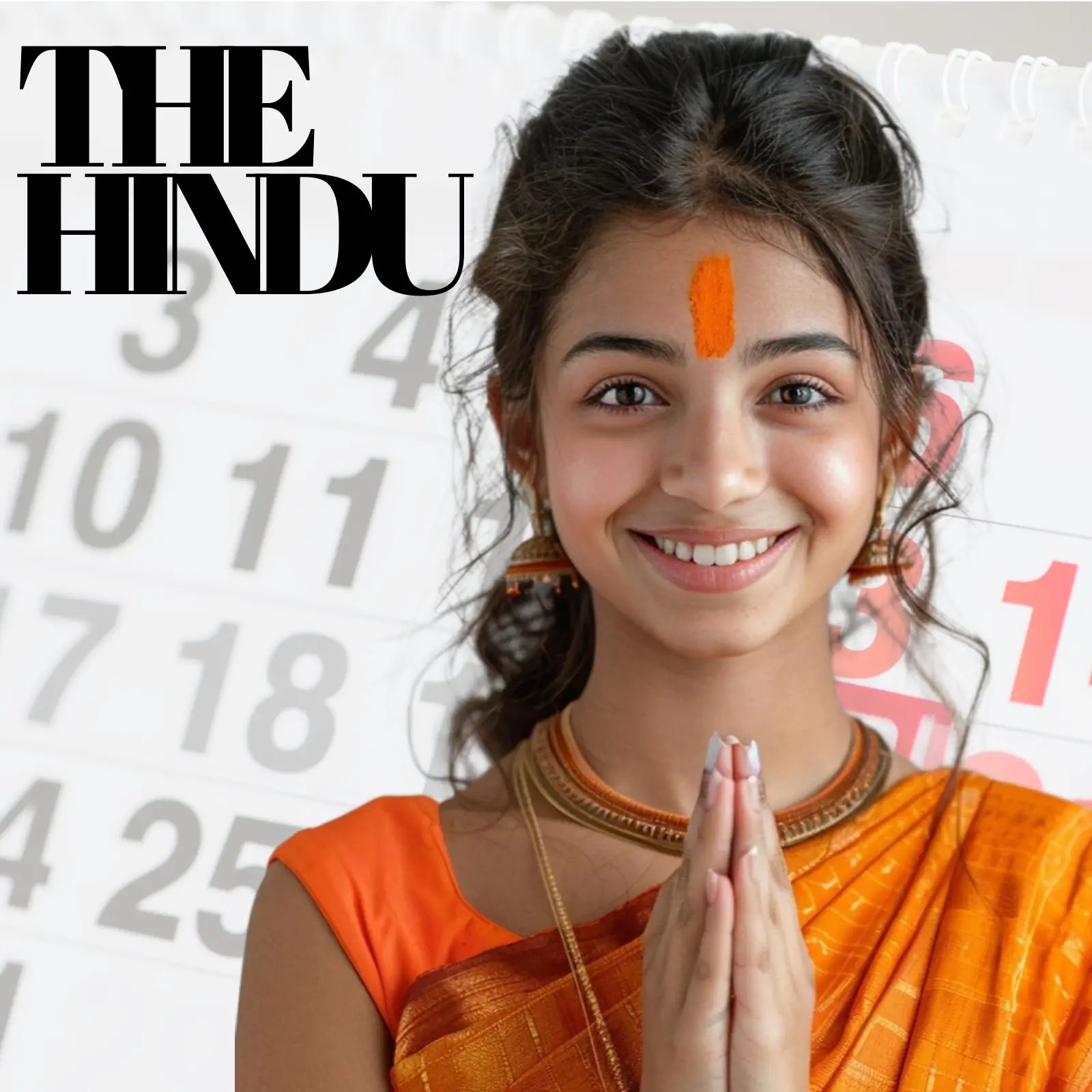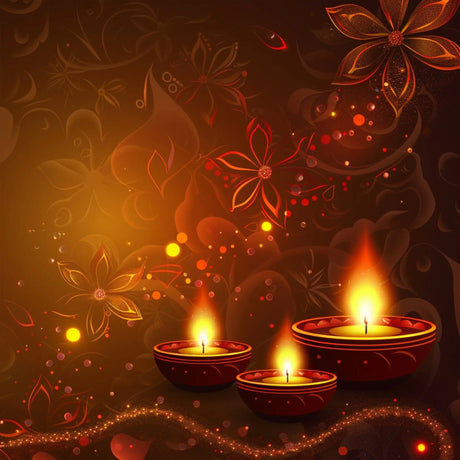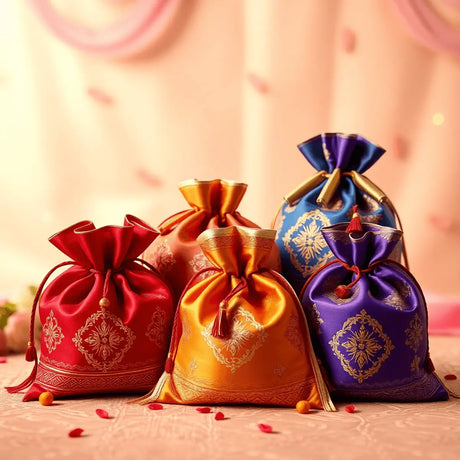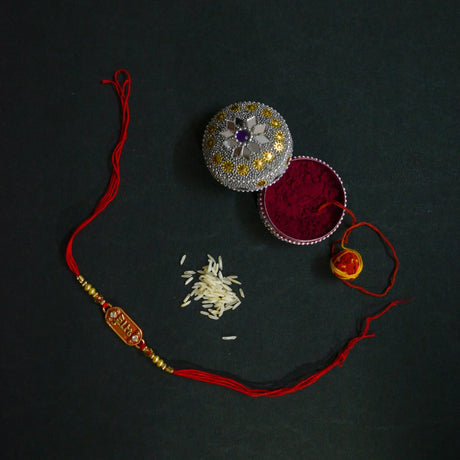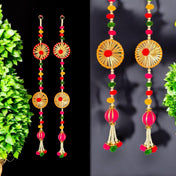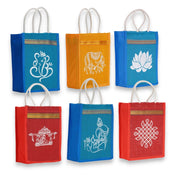Introduction
Hinduism is one of the oldest religions, characterized by a rich tapestry of beliefs and practices. Central to this faith are its numerous Hindu holidays and festivals, each celebrating various aspects of life, nature, and spirituality.
Key features include:
- Diverse Celebrations: Festivals often honor deities, mark seasonal changes, or commemorate historical events.
- Rituals and Traditions: Each festival encompasses unique rituals, including prayers, music, dance, and community gatherings.
In this article, we will explore the significance, rituals, and unique traditions associated with some of the most widely celebrated Hindu holidays. You'll discover how these celebrations not only strengthen community bonds but also uphold cultural heritage throughout generations.
Celebrations Honoring Deities
Hinduism is rich in traditions that celebrate various deities, each festival reflecting their unique attributes. These celebrations often involve elaborate rituals, community participation, and a deep sense of devotion.
Krishna Janmashtami
Krishna Janmashtami marks the birth anniversary of Lord Krishna, one of the most revered deities in Hinduism. Celebrated with great enthusiasm, this festival typically falls in August.
Key Observances
- Devotional Songs: Devotees sing bhajans (devotional songs) that recount the life and exploits of Krishna.
- Community Festivities: Many communities organize reenactments of episodes from Krishna's life, known as Ras Leela.
- Fasting Practices: Observers often fast until midnight, the time believed to be Krishna's birth hour. This fasting exemplifies devotion, with many breaking their fast with sweets and milk-based delicacies after the midnight prayers.
Ganesha Chaturthi
Another significant festival is Ganesha Chaturthi, celebrating the birth of Lord Ganesha, the remover of obstacles and god of wisdom and prosperity.
Key Observances
- Idol Creation and Immersion: Artisans create clay idols of Ganesha, which are installed in homes and public places for worship. The immersion of these idols in water at the end of the festival symbolizes the cycle of creation and dissolution.
- Community Engagement: Ganesha Chaturthi fosters community spirit as neighbors come together to organize festivities, including cultural programs and processions.
- Significance: The festival serves as a reminder to seek wisdom and prosperity through devotion and selfless service. To enhance your celebration, consider buying a Ganesha gift hamper, which can be used for various Hindu religious occasions including Ganesh Chaturthi. You can also explore more about this festival and its significance by visiting our Ganesha Festival collection.
Dussehra (Vijayadashami)
Dussehra, also known as Vijayadashami, celebrates the victory of good over evil. It commemorates Lord Rama’s triumph over Ravana, as depicted in the epic Ramayana.
Key Observances
- Narrative Significance: This festival tells the story of Rama's quest to rescue Sita from Ravana, emphasizing moral values like dharma (righteousness).
- Cultural Expressions: Festivities include Ramlila, theatrical performances that dramatize scenes from the Ramayana. These performances engage large audiences while imparting moral lessons.
- Celebratory Atmosphere: Effigies of Ravana are burned on the last day, symbolizing the destruction of evil forces.
These festivals not only honor divine figures but also serve to foster community ties and reinforce cultural values through shared rituals and celebrations.
Guru Govind Singh Jayanti
Guru Govind Singh Jayanti celebrates the birth anniversary of Guru Gobind Singh, the tenth Sikh Guru. This significant day is observed by Sikhs worldwide, honoring his life and teachings.
Key aspects of this celebration include:
- Prayers and Kirtan: Devotees gather in Gurdwaras to participate in prayers and kirtan, which involves singing hymns that express devotion and praise for Guru Gobind Singh.
- Community Service: Acts of selfless service, or seva, are a hallmark of this day. Many Sikhs engage in community service by organizing free meals (langar) for all, reflecting the Guru's teachings on equality and compassion.
- Reflection on Teachings: Celebrants take time to reflect on the sacrifices made by Guru Gobind Singh, including his commitment to justice and righteousness. His legacy inspires many to uphold values of courage, humility, and faith.
This day serves not only as a celebration but also as a reminder of the principles that guide Sikhs in their daily lives. The spirit of unity and devotion is palpable during these observances, enriching the communal experience.
Lohri
Lohri, a festival celebrated primarily in Punjab, heralds the end of winter and welcomes longer days and warmer weather. The festival holds significant ties to the harvest of sugarcane, symbolizing prosperity and abundance. Families gather around bonfires, an essential aspect of the celebration. Traditionally observed on January 13th, Lohri brings families together to share festive foods like sesame seeds and jaggery, creating a sense of community and joy.
During Lohri, people engage in lively singing and dancing around the fire, often performing traditional Punjabi folk dances such as Bhangra and Gidda. Children play an important role in the festivities, going from house to house singing songs and collecting treats.
Bonfires serve not only as a central gathering point but also as a ritual offering where participants toss various items like popcorn and sugarcane into the flames as a gesture of gratitude for the harvest. This act symbolizes letting go of the past year’s challenges while embracing new beginnings.
Lohri embodies warmth, joy, and a strong sense of community, making it one of the most cherished festivals among Punjabis worldwide. To enhance your Lohri celebrations, consider exploring this Lohri collection which offers a variety of items that can add more vibrancy to this special occasion.
Pongal
Pongal is a vibrant multi-day harvest festival celebrated primarily in Tamil Nadu. This festival marks the end of the winter solstice and the beginning of the sun's northward journey, known as Uttarayana.
Key elements of Pongal celebrations include:
- Culinary Traditions: The centerpiece of the festival is a special dish called Pongal, made from newly harvested rice, milk, and jaggery. This dish symbolizes abundance and gratitude to nature for its bountiful gifts.
- Decorative Art: Homes are adorned with kolams, intricate designs crafted from rice flour placed at entrances. These beautiful patterns invite prosperity and good fortune into households.
- Spiritual Observances: Performing pujas to honor the Sun God is an essential part of Pongal. Devotees express their gratitude through prayers and offerings, reinforcing their connection with nature.
- Cultural Festivities: Traditional music and dance form an integral part of the celebrations. Community gatherings are filled with joyous songs and lively performances that reflect regional customs and heritage.
Pongal not only celebrates the harvest but also reinforces familial bonds as families come together to share in the joy of the season.
Makar Sankranti
Makar Sankranti is an important astrological event that marks the sun's transition into the zodiac sign of Capricorn. This transition signifies the end of winter and the beginning of longer days, bringing about a change in seasons.
This festival is celebrated with various regional traditions that reflect local customs and cultures:
1. Kite Flying
One of the most vibrant activities during Makar Sankranti, especially in states like Gujarat. Colorful kites fill the sky as families and friends gather to compete in kite flying contests.
2. Bonfires
Many communities light bonfires to symbolize the warmth and joy associated with the harvest season. People gather around these fires to sing, dance, and share stories.
3. Special Feasts
Traditional dishes featuring sesame seeds and jaggery are prepared, symbolizing sweetness and prosperity. These ingredients are integral to many festive recipes, such as tilgul (sesame sweets). You can explore more about these Sankranti special dishes here.
Makar Sankranti encourages family gatherings and community celebrations. Rituals performed during this time express gratitude for the harvest, emphasizing appreciation for nature's bounty. Participants often engage in charitable acts, reinforcing bonds within communities while celebrating abundance together.
Vasant Panchami
Vasant Panchami marks the arrival of spring and is dedicated to Goddess Saraswati, the goddess of knowledge, music, and arts. Celebrated on the fifth day of the Hindu month Magha, this festival represents new beginnings and the flourishing of creativity.
Key aspects of Vasant Panchami include:
- Attire: Participants often wear yellow clothing, symbolizing prosperity and the vibrant colors of spring.
- Offerings: Yellow foods such as sweets and rice are prepared and offered in reverence to Goddess Saraswati, enhancing the festive spirit.
- Cultural Activities: The day is filled with singing, dancing, and various educational events that celebrate learning and artistic expression.
In many regions, schools organize special prayers and programs dedicated to Goddess Saraswati. Students participate by reciting hymns and showcasing their talents in music and arts. This nurturing environment fosters a sense of community while emphasizing the importance of education and creativity.
Vasant Panchami not only marks a seasonal transition but also serves as an opportunity for individuals to reflect on their personal growth and aspirations in knowledge and creativity. To honor Goddess Saraswati during this auspicious occasion, many people choose to decorate their homes or temples with beautiful items such as a brass statue of the goddess or colorful backdrop posters that symbolize her divine presence.
Maha Shivaratri
The Maha Shivaratri, known as the Great Night of Shiva, is a significant Hindu festival celebrated annually on the 14th night of the dark fortnight in the month of Phalguna. This festival holds deep spiritual significance for devotees of Lord Shiva.
Key aspects of Maha Shivaratri include:
- Fasting and Vigils: Many devotees observe strict fasting and engage in night vigils. These practices symbolize dedication and devotion to Lord Shiva.
- Prayers and Rituals: Devotees perform various rituals such as chanting mantras, offering flowers, and lighting lamps. These actions are aimed at seeking blessings for spiritual growth and the removal of obstacles in life.
- Symbolism: The festival represents the overcoming of darkness and ignorance. It emphasizes the union of Shiva and Shakti, reflecting balance in life.
Grand celebrations occur at temples across India, where devotees gather to participate in collective prayers, dance, and music dedicated to Lord Shiva. The atmosphere is filled with devotion, as participants express their reverence through various forms of worship.
In many homes and temples during this auspicious occasion, it's common to see beautiful decorations such as Nataraj backdrops which depict Lord Shiva in his dancing form, symbolizing the cosmic cycles of creation and destruction. These backdrops serve as a visual representation of the divine energy that devotees seek to connect with during Maha Shivaratri.
Holi
Holi, also known as the Festival of Colors, is a lively celebration that marks the arrival of spring and represents the victory of good over evil. This joyous festival, which usually occurs in March, encourages people to participate in heartfelt festivities. You can explore more about this vibrant celebration here.
Key aspects of Holi include:
- Colorful Celebrations: Participants throw colored powders, known as gulal, at each other, creating a lively atmosphere filled with laughter and joy.
- Music and Dance: The air resonates with traditional songs and rhythmic dance, enhancing the sense of community and togetherness.
- Festive Foods: Families prepare and share special sweets like gujiya and drinks such as thandai, enriching the experience with delightful flavors.
The significance of Holi is deeply rooted in Hindu mythology. One prominent legend involves Prahlad, a devout follower of Lord Vishnu, and Holika, his evil aunt who attempted to kill him. Through unwavering devotion, Prahlad triumphed over Holika's malevolence, symbolizing faith's strength against adversity.
This festival not only promotes communal harmony but also serves as a reminder to celebrate life’s joys while embracing the spirit of renewal that spring brings.
Ugadi
Ugadi marks the beginning of the New Year for several South Indian states, including Andhra Pradesh and Karnataka. This vibrant festival is celebrated with a variety of traditional rituals that reflect the cultural richness of the region. The celebrations often include special Ugadi collections featuring traditional attire and decor.
1. Ugadi Pachadi: Embracing Life's Flavors
A special dish prepared during this time, symbolizes the mixture of different flavors of life—sweet, sour, bitter, and spicy. Each ingredient represents an aspect of life, reminding individuals to embrace all experiences throughout the year.
2. Home Decorations: Signifying Prosperity
People adorn their homes with fresh mango leaves and colorful floral arrangements. These decorations signify prosperity and freshness that a new year brings.
3. Cultural Activities: Fostering Community Spirit
Ugadi festivities include singing traditional songs, performing folk dances, and visiting temples for prayers. Engaging in these activities fosters a sense of community and shared joy among families and friends.
4. Rituals: Seeking Blessings for the New Year
Devotees participate in special pujas (prayers) to seek blessings for health, wealth, and happiness in the coming year.
Through these diverse celebrations, Ugadi not only marks the New Year but also deepens cultural ties within communities.
Gudi Padwa
Gudi Padwa is the Marathi New Year and is celebrated with great enthusiasm throughout Maharashtra. This festival represents new beginnings, bringing a fresh start for many families.
Key aspects of Gudi Padwa include:
- Raising the Gudi: A prominent feature is the raising of the 'Gudi', a decorated pole adorned with vibrant cloth, neem leaves, and a silver or copper pot at the top. This symbolizes prosperity and good fortune for the coming year.
- Culinary Traditions: Families prepare special dishes such as Puran Poli, a sweet flatbread filled with jaggery and split gram, which is enjoyed during festive meals. The preparation of this dish involves traditional cooking methods that have been passed down through generations.
- Home Decor and Celebrations: Homes are adorned with colorful rangoli designs at the entrance and mango leaf decorations, inviting positivity. Cultural events like singing folk songs and performing traditional dances enliven the celebrations.
Engaging in these activities fosters a sense of community, strengthening bonds among families and friends. Gudi Padwa embodies both cultural richness and spiritual significance, marking an important day in the Marathi calendar.
Rama Navami
Rama Navami celebrates the birth of Lord Rama, an avatar of Vishnu, and is observed on the ninth day of the Chaitra month in the Hindu calendar. This festival holds immense significance as it marks the arrival of a divine figure who embodied dharma (righteousness) and virtue.
Key aspects of Rama Navami include:
- Prayers and Recitations: Devotees engage in prayers and recite excerpts from the Ramayana, which narrates Lord Rama's life, struggles, and ideals.
- Vibrant Processions: Communities organize colorful processions featuring idols of Lord Rama, Sita, Lakshmana, and Hanuman, showcasing elaborate decorations and traditional music. For those looking to enhance their home decor with religious idols, such as a brass Ram Darbar statue, this festival provides an excellent opportunity.
- Symbolism: The festival symbolizes the victory of good over evil, inspiring individuals to follow the path exemplified by Lord Rama. His commitment to truth and justice encourages devotees to practice righteousness in their daily lives.
As families gather to celebrate, they often prepare special dishes and sweets, enhancing the festive atmosphere. Rituals may include puja (worship) ceremonies at temples or homes, fostering a sense of community and shared devotion.
Mahavir Jayanti
Mahavir Jayanti celebrates the birth of Lord Mahavir, the 24th Tirthankara of Jainism. His teachings emphasize non-violence (ahimsa), truth (satya), and compassion towards all living beings. This festival is observed with deep reverence by Jains around the globe.
Key features of Mahavir Jayanti include:
- Date: Observed on the 13th day of Chaitra in the Hindu calendar, typically falling in March or April.
- Prayers and Rituals: Devotees engage in prayers at Jain temples, reciting verses from sacred texts that highlight Lord Mahavir's teachings.
- Processions: Many communities organize vibrant processions featuring images or statues of Lord Mahavir, accompanied by chanting and singing devotional songs.
- Charitable Activities: Acts of kindness are encouraged on this day, with many individuals participating in charitable deeds such as feeding the needy or donating to social causes.
The emphasis on values like compassion and forgiveness resonates throughout the celebrations, inspiring individuals to adopt a lifestyle rooted in respect for all forms of life. These teachings continue to guide followers towards a path of peace and harmony.
Vaisakhi
Vaisakhi, also known as Baisakhi, marks the Punjabi New Year and is celebrated on April 13 or 14, symbolizing the start of the harvest season. This vibrant festival holds significant religious importance for Sikhs, commemorating the formation of the Khalsa in 1699 by Guru Gobind Singh Ji. This event established a collective identity for Sikhs and emphasized values such as equality, selflessness, and courage.
Celebrations during Vaisakhi are marked by:
- Vibrant Processions: Known as Nagar Kirtans, these processions feature singing of hymns and chanting, with participants often dressed in traditional attire.
- Traditional Music and Dance: Bhangra and Gidda performances fill the air with energy and joy, showcasing rich Punjabi culture.
- Communal Meals (Langar): At gurdwaras, free community meals are served to everyone regardless of background or faith, emphasizing unity and brotherhood.
The festive spirit brings families and communities together, fostering a sense of belonging and celebration of life’s abundance. The joyous atmosphere reflects both agricultural prosperity and spiritual significance for Sikhs around the world.
Bahag Bihu/Vaisakhadi
Bahag Bihu, celebrated in Assam, marks the Assamese New Year and the arrival of spring, symbolizing renewal and fertility. This vibrant festival is a time for joy and communal harmony.
Vaisakhadi serves as a significant harvest festival showcasing traditional music, dance, and feasting. It reflects the rich cultural heritage of Assam, with various artistic expressions coming to life during this period.
The festival is deeply rooted in agricultural practices. It celebrates the end of the harvesting season and expresses gratitude to nature for its bounty.
During Bahag Bihu, families engage in various rituals. People wear traditional attire, visit friends and relatives, and partake in sumptuous feasts featuring local delicacies.
Cultural Expressions:
- Dance: Bihu dance is performed with lively movements reflecting the joy of nature’s abundance.
- Music: Traditional instruments like the dhol (drum) accompany folk songs that narrate tales of love and nature.
As celebration spreads across villages, it fosters community spirit and enhances connections among people, embodying the essence of Assamese culture through shared experiences and gratitude for a prosperous harvest season.
Rath Yatra
Rath Yatra, also known as the Chariot Festival, is a vibrant celebration primarily held in Puri, Odisha. This festival honors Lord Jagannath, an incarnation of Lord Krishna, and embodies a rich tapestry of devotion and community spirit.
Key features of Rath Yatra include:
- Grand Procession: Massive chariots carrying the deities Jagannath, Balabhadra, and Subhadra are pulled by thousands of enthusiastic devotees. The sight of these towering chariots moving through the streets is both awe-inspiring and spiritually uplifting.
- Symbolic Journey: The festival represents the annual journey of the deities from their temple to their garden home. This journey emphasizes themes of devotion and collective participation among the community.
- Cultural Significance: Rath Yatra not only strengthens communal bonds but also showcases various cultural expressions through music, dance, and vibrant decorations along the route.
Devotees often engage fervently during this festival, reflecting a deep sense of connection with their faith. The atmosphere is filled with excitement, chants, and fervor as people from all walks of life come together to celebrate in unity.
A common sight during this festival is the use of hanging brass bells in temples or during pooja rituals. These bells, often used for inviting divine presence, add a unique charm to the celebrations.
Guru Purnima
Guru Purnima is an important Hindu festival dedicated to honoring spiritual teachers and gurus. This festival is celebrated on the full moon day in the month of Ashadha, usually between June and July.
Key aspects of Guru Purnima include:
- Gratitude Expression: Devotees express their gratitude towards their gurus through prayers, offerings, and rituals. This day serves as a reminder of the vital role that knowledge and wisdom play in an individual's life.
- Monsoon Season Connection: Traditionally, Guru Purnima marks the beginning of the monsoon season in India. The rains symbolize renewal and growth, paralleling the spiritual growth facilitated by a guru's teachings.
- Sage Vyasa’s Teachings: The festival is also associated with the revered sage Vyasa, who is considered one of the greatest gurus in Hindu philosophy. He is credited with composing key scriptures, including the Mahabharata and Vedas.
Celebrating Guru Purnima involves various practices such as gathering for group prayers, conducting special pujas (rituals), and sharing stories that highlight the significance of learning from one's teacher. This day not only honors individual gurus but reflects a broader appreciation for the pursuit of knowledge within society.
Varalakshmi Vratam
The Varalakshmi Vratam, a revered festival celebrated by Hindu women, is dedicated to seeking the blessings of Goddess Lakshmi, the embodiment of prosperity and well-being. This auspicious occasion typically unfolds on the Friday before the full moon in the month of Shravana.
Key elements of Varalakshmi Vratam include:
- Fasting: Devotees observe a day-long fast, devoting themselves to prayers and rituals that honor the goddess.
- Prayers and Offerings: Women gather to perform elaborate pujas, chanting sacred hymns and offering special items such as fruits, flowers, and sweets to Goddess Lakshmi.
- Kolams (Rangoli): The celebration features intricate designs created at home entrances using rice flour, symbolizing an invitation for divine energy and prosperity.
The festival embodies deep devotion and gratitude towards Goddess Lakshmi. By participating in Varalakshmi Vratam, women express their aspirations for wealth, health, and harmony within their families. The rituals not only strengthen familial bonds but also enhance spiritual awareness among participants.
Raksha Bandhan (Rakhi)
Raksha Bandhan, commonly known as Rakhi, celebrates the cherished bond between brothers and sisters. This festival symbolizes love, protection, and familial ties. The celebration often involves the tying of a Rakhi by sisters on their brothers' wrists, signifying their love and the brothers' promise to protect them.
The Ritual
During Rakhi, sisters tie a sacred thread, known as Rakhi, around their brothers' wrists. This act signifies their love and prayers for their brothers' well-being.
Brothers' Promise
In return, brothers vow to protect their sisters from all harm. They often present gifts as a token of appreciation for their sister's affection.
The festival is celebrated on the full moon day of the Hindu month of Shravana. It is marked by vibrant family gatherings, where relatives come together to honor these bonds.
Feasting and Sweets
Traditional sweets play a significant role in this celebration. Families exchange various delicacies, enhancing the festive spirit.
Rakhi not only fortifies sibling relationships but also fosters a sense of unity among families. The festival reflects the deep-rooted values of love and commitment that define Indian culture. As families gather to celebrate this occasion, it reinforces the importance of togetherness and mutual respect within relationships.
Janmashtami
Janmashtami celebrates the birth of Lord Krishna, an incarnation of Vishnu, and is marked by joyous festivities throughout India and beyond. This festival typically falls in the month of Shravana (August-September) and attracts millions of devotees eager to honor this divine event.
Key elements of Janmashtami include:
- Fasting: Many devotees observe a day-long fast, refraining from food and water until midnight, the auspicious hour of Krishna's birth.
- Devotional singing and dancing: Communities engage in bhajans (devotional songs) and traditional dances, creating an atmosphere of joy and reverence.
- Reenactments: Dramatic performances, known as Raslila, depict Krishna's childhood exploits, including his playful antics with friends and encounters with various characters in Hindu mythology.
The climax of the celebration occurs at midnight, symbolizing Lord Krishna’s arrival. Temples are beautifully decorated, and devotees gather for communal prayers. The joy of Janmashtami resonates through the air as families come together to celebrate love, devotion, and the spirit of togetherness that Krishna embodies.
As a part of these celebrations, many people choose to adorn their homes or temples with beautiful idols such as this brass Radha Krishna statue, which serves as a perfect decorative piece for home temple mandir pooja decor.
Ganesh Chaturthi/Vinayaka Chaturthi
Ganesh Chaturthi, also known as Vinayaka Chaturthi, is a vibrant Hindu festival celebrating the birth of Lord Ganesha, the remover of obstacles and the god of wisdom and prosperity.
This festival lasts for 10 days, culminating in the immersion of Ganesha idols in water, which symbolizes the cycle of birth and rebirth. Celebrated with great enthusiasm across India, Ganesh Chaturthi involves:
- Elaborate decorations in homes and public spaces
- Cultural performances showcasing music, dance, and drama
- Prayers and rituals to invoke blessings from Lord Ganesha
- Communal feasts, where families and friends come together to share festive foods
The processions during this festival are particularly noteworthy. Enthusiastic devotees carry beautifully crafted idols through the streets, often accompanied by traditional music, chanting, and dancing. This communal spirit fosters a sense of unity among participants. People from different backgrounds gather to celebrate, highlighting inclusivity and shared joy.
To honor Lord Ganesha during this festival, many people choose to give or receive gifts that symbolize good fortune and prosperity. For instance, a Ganesha gift hamper can be a thoughtful present during this time. These hampers often include items used in puja rituals such as haldi-kumkum packets, which are significant in Hindu traditions.
Moreover, it's common to see idols of Lord Ganesha being placed in homes as part of the celebration. A Laxmi Ganesh Saraswati statue can serve as an auspicious addition to one's home temple or puja room during this festive period.
Onam
Onam is a vibrant harvest festival celebrated primarily in Kerala, commemorating the homecoming of the legendary King Mahabali. This festival spans ten days, each filled with rich cultural expressions and traditional practices.
Key features of Onam include:
- Traditional Dance and Music: Festivities showcase various traditional dance forms like Kathakali and Mohiniyattam, along with folk songs that celebrate the spirit of the season.
- Onam Sadhya: A highlight of the celebration is the elaborate feast known as Onam Sadhya, featuring an array of vegetarian dishes served on a banana leaf. The meal often includes rice, curries, pickles, and desserts like payasam, symbolizing abundance and gratitude.
- Pookalam: Homes are adorned with intricate floral designs called Pookalam, created to welcome King Mahabali during his annual visit. These colorful patterns reflect creativity and devotion.
Onam fosters community spirit as families come together to celebrate the harvest, sharing joy through cultural events and collective meals. The festival encapsulates the essence of unity and prosperity, making it one of the most beloved celebrations in Kerala.
Sharad Navratri (First Day)
Sharad Navratri marks the beginning of a nine-night festival dedicated to the worship of Goddess Durga. This festival symbolizes the victory of good over evil, honoring the divine feminine energy that prevails in various forms.
The first day, known as Pratipada, is particularly significant as devotees invoke Goddess Shailputri. She represents strength and stability, embodying the essence of devotion and power.
On this day, followers engage in sacred rituals and prayers to seek blessings for health and prosperity.
Fasting is a common practice during this period, reflecting commitment and reverence towards the goddess. Many devotees consume only fruits and specific vegetarian dishes, adhering to dietary restrictions that enhance spiritual focus.
Cultural performances play a crucial role in these celebrations, with traditional dances and songs dedicated to the goddess illuminating community spaces.
Sharad Navratri fosters a sense of unity among participants who come together to celebrate the triumph of righteousness. Each evening culminates in vibrant gatherings where stories of the goddess's valor are shared, deepening the connection between devotees and their faith.
Durga Puja Festivities (First Day)
The Durga Puja, one of the most significant festivals in Hinduism, begins with Mahalaya. This day marks the arrival of Goddess Durga to Earth. Devotees perform heartfelt rituals and chant hymns, inviting her spirit to bless the celebrations. The first day of the festivities, known as Shashthi, is especially important. It features the unveiling of the idol of Goddess Durga and her ceremonial welcome, marking the beginning of a week-long celebration.
.
Highlights of Durga Puja
Some key highlights of this vibrant festival include:
- Vibrant Decorations: Homes and pandals (temporary structures) are adorned with intricate decorations that reflect artistic creativity.
- Cultural Performances: Traditional music and dance performances take center stage, showcasing Bengali heritage through various art forms.
- Community Gatherings: Families and friends come together to share meals and participate in cultural activities, strengthening community bonds.
The atmosphere is filled with joy and devotion, drawing people from all walks of life to celebrate the triumph of good over evil. Each moment during these festivities resonates with spiritual fervor and cultural richness.
Dussehra
Dussehra, also known as Vijayadashami, celebrates the victory of Lord Rama over the demon king Ravana. This triumph symbolizes the enduring battle between good and evil.
Key features of Dussehra include:
- Timing: Celebrated on the tenth day of Navratri, marking the culmination of nine days of worship.
- Theatrical Performances: Community events showcase Ramlila, a dramatic reenactment of Lord Rama's life, highlighting pivotal moments from the epic Ramayana.
- Effigy Burning: The festival culminates with the burning of large effigies of Ravana, signifying the destruction of negativity and ignorance.
Regional variations enrich this celebration:
- In Mysore, Dussehra is marked by royal parades featuring decorated elephants and cultural displays that reflect Karnataka's heritage.
- In West Bengal, Dussehra coincides with Durga Puja, emphasizing a blend of rituals where Goddess Durga’s victory over Mahishasura intertwines with Rama's conquest.
Dussehra serves as a reminder for devotees to uphold righteousness in their lives. The vibrant celebrations foster community spirit, weaving together diverse traditions across India.
Karva Chauth
Karva Chauth is a significant festival celebrated by married Hindu women, dedicated to the well-being and longevity of their husbands. This day is marked by a rigorous fast from sunrise to moonrise, showcasing immense devotion.
Key aspects of Karva Chauth include:
- Sargi: A pre-dawn meal consumed before the fast begins. This meal often consists of various foods that provide energy for the day ahead.
- Moon Sighting Ritual: After a day of fasting, women eagerly await the sighting of the moon. They use a sieve to view the moon before breaking their fast, symbolizing clarity and protection.
The festival serves as a powerful expression of love and commitment. Women gather with friends and family, sharing stories and encouraging one another through the day’s challenges. This communal spirit not only strengthens bonds among women but also fosters a sense of unity within families.
Through these rituals, Karva Chauth highlights the cultural significance of marital relationships in Hinduism. The observance deepens emotional connections while reinforcing traditional values surrounding love and devotion.
To celebrate this special occasion, gift hampers filled with traditional items like haldi and kumkum can be meaningful presents. These hampers are not just gifts but also serve as a token of love and respect towards one's marital relationship.
Diwali/Deepavali
Diwali, also known as Deepavali, is widely known as the Festival of Lights. Celebrated by millions of Hindus worldwide, it represents the triumph of light over darkness and good over evil. The festival lasts for five days, with each day dedicated to specific rituals and significance.
The Five Days of Diwali
- Day 1: Dhanteras - Marks the beginning of Diwali, focusing on wealth and prosperity. On this day, devotees purchase new items for their homes.
- Day 2: Naraka Chaturdashi - Also known as Choti Diwali, this day commemorates Lord Krishna's victory over the demon Narakasura.
- Day 3: Lakshmi Puja - The main day of Diwali when devotees worship Goddess Lakshmi, seeking her blessings for wealth and abundance.
- Day 4: Govardhan Puja - Celebrates Lord Krishna lifting the Govardhan Hill to protect devotees from torrential rains.
- Day 5: Bhai Dooj - Honors the bond between brothers and sisters.
Traditions of Diwali
During Diwali, various traditions are followed to celebrate the festival:
- Lighting oil lamps (diyas) to ward off darkness
- Decorating homes with colorful rangoli designs
- Exchanging gifts and sweets to spread joy
- Setting off fireworks that illuminate the night sky
This vibrant festival promotes unity and happiness in communities, making it a beloved time for families. During this period, it's common to exchange meaningful gifts such as Puja gift hampers, which are often used in traditional ceremonies like Navratri Kanya Pujan or Diwali Pooja.
Govardhan Puja
Govardhan Puja, celebrated on the day after Diwali, holds deep significance in Hindu tradition. This festival honors Lord Krishna's miraculous act of lifting the Govardhan Hill to protect villagers from torrential rains unleashed by Indra, the king of the heavens.
During this celebration, devotees engage in several meaningful activities:
- Creation of Govardhan Hill: A representation of the Govardhan Hill is crafted using cow dung, symbolizing purity and reverence for nature.
- Offering Delicacies: Various traditional foods are offered to the hill, including sweets and fruits. This act serves as a gesture of gratitude and devotion to Krishna.
The festival emphasizes the importance of nature and environmental stewardship. It reflects Krishna's teachings about living in harmony with the earth. By honoring this connection, devotees are reminded of their responsibility towards nature and the environment.
Festivities often include singing devotional songs and engaging in community gatherings. Families come together to celebrate this occasion, reinforcing their bonds while participating in rituals that honor their cherished beliefs. The spirit of unity and gratitude resonates throughout this vibrant celebration, making it a cherished part of Hindu culture.
Bhai Duj
Bhai Duj, celebrated two days after Diwali, honors the special bond between brothers and sisters. This festival emphasizes love, protection, and familial ties.
Rituals
Sisters perform a ritual known as 'Tika' where they apply a ceremonial mark on their brothers’ foreheads. This act symbolizes their prayers for their brothers’ long life and prosperity.
Gifts
In return, brothers express their gratitude by giving gifts to their sisters. These can range from sweets to tokens of appreciation that strengthen their bond.
Celebrations
The day is filled with family gatherings, feasting, and the exchange of sweets. Traditional dishes are prepared, enhancing the festive atmosphere.
This celebration not only reinforces sibling relationships but also fosters a sense of unity within families. The warmth and joy shared during Bhai Duj highlight the importance of familial love in Hindu culture. Through rituals and festivities, it serves as a reminder of the mutual respect and affection between siblings.
Chhat Puja (Pratihar Sashthi/Surya Sashthi)
Chhat Puja is an important Hindu festival dedicated to the Sun God, Surya, and his wife, Usha. It is mainly celebrated in Bihar and Uttar Pradesh, and it highlights the strong connection between nature and spirituality.
Key aspects of Chhat Puja include:
- Duration: The festival lasts for four days, filled with rigorous fasting and devotion.
- Rituals: Devotees perform prayers at riverbanks during sunrise and sunset. The rituals symbolize gratitude towards the Sun God, who is believed to bestow health, wealth, and prosperity.
- Environmental Responsibility: Participants clean their surroundings before the festivities commence. This practice highlights the importance of environmental sustainability and respect for nature.
During Chhat Puja, families come together to prepare special offerings such as 'Thekua' (a sweet snack) and various fruits. The atmosphere is lively with songs dedicated to Surya, creating a sense of community spirit among participants. This celebration not only strengthens family bonds but also promotes respect for natural resources, which aligns with the core values of Hinduism.
Regional Festivals and Unique Observances
Hinduism is characterized by a rich diversity of festivals, each rooted in regional customs and cultural traditions. These celebrations often hold special meanings for specific communities or individuals, reflecting their unique heritage. Here are some notable regional festivals and observances:
Lohri
Lohri is a vibrant harvest festival primarily celebrated in Punjab. It marks the end of winter and the arrival of longer days.
- For farmers, Lohri symbolizes gratitude for the harvest of sugarcane. The festival is especially important as it represents prosperity and abundance in agriculture.
- Families gather around bonfires, singing traditional folk songs and dancing to celebrate togetherness. The flames symbolize warmth and the sun, while participants often throw sesame seeds, jaggery, and popcorn into the fire as offerings.
Pongal
Pongal is a multi-day harvest festival celebrated predominantly in Tamil Nadu. It signifies the end of the winter solstice and heralds the sun's northward journey.
- The highlight of this festival is cooking a special dish called 'Pongal', made from newly harvested rice, milk, and jaggery, symbolizing abundance.
- Homes are decorated with kolams (intricate designs made from rice flour). Devotees perform pujas to honor the Sun God, engage in traditional music and dance, and share festive meals with family and friends.
Ugadi
Ugadi marks the New Year for people in Andhra Pradesh and Karnataka. It typically falls in March or April depending on the lunar calendar.
- This festival aligns with harvest cycles, emphasizing renewal and fresh beginnings.
- People prepare a special dish called 'Ugadi Pachadi', which combines sweet, sour, salty, bitter, and spicy flavors representing life's diverse experiences. Festivities often include prayers at temples and family gatherings.
Raksha Bandhan (Rakhi)
Raksha Bandhan celebrates the bond between siblings. Traditionally observed on a full moon day in August, it emphasizes love and protection.
- Sisters tie a rakhi (a sacred thread) around their brothers' wrists while praying for their well-being. In return, brothers promise to protect their sisters throughout life.
- This festival strengthens familial ties and fosters mutual respect among siblings. Gifts exchanged during this time enhance the celebratory spirit.
Govardhan Puja
Govardhan Puja honors Govardhan Hill associated with childhood stories of Lord Krishna. This observance takes place a day after Diwali.
- It symbolizes Krishna’s victory over Indra by lifting Govardhan Hill to protect villagers from torrential rains.
- Devotees create food offerings shaped like Govardhan Hill itself using various grains and sweets. They also engage in prayers expressing gratitude for nature’s bounty.
Karva Chauth
Karva Chauth is observed by married women who fast from sunrise to moonrise for their husbands' longevity and prosperity.
This ritual involves preparing special meals for their husbands once they sight the moon, followed by breaking their fast together.
Conclusion
Participating in the various Hindu holidays offers a unique opportunity to explore and appreciate the rich tapestry of Hindu culture. Each festival embodies:
- Spiritual significance: Celebrations often honor deities and significant events in Hindu mythology.
- Community bonding: Festivals like Lohri and Pongal foster connections among families and communities, enhancing social ties.
- Cultural expression: Rituals, music, dance, and traditional foods highlight regional diversity and shared heritage.
Engaging in these vibrant celebrations allows you to witness the profound values of joy, gratitude, and devotion that pervade Hinduism. The importance of Hindu holidays extends beyond mere observance; they invite you to immerse yourself in traditions that have been cherished through generations. Embracing these festivities can deepen your understanding of the beliefs and practices that shape this ancient faith.

